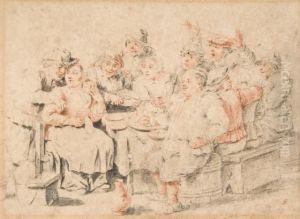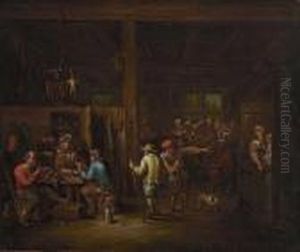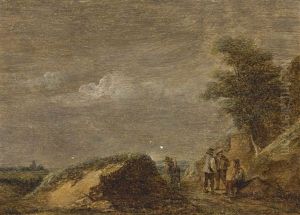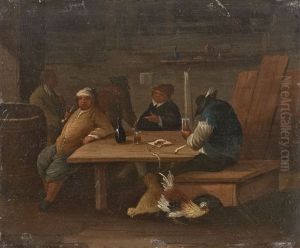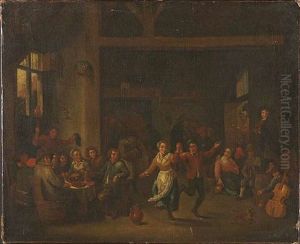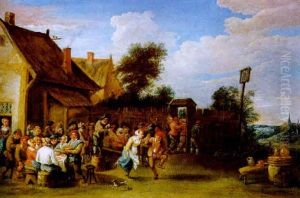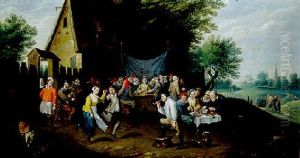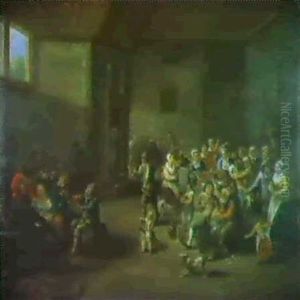Ferdinand Van Apshoven Paintings
Ferdinand Van Apshoven the Younger was a Flemish painter who is known for his contributions to the Baroque period. Born in 1630 in Antwerp, then part of the Spanish Netherlands, he became part of a family with strong artistic traditions. His father, Ferdinand van Apshoven the Elder, was also a painter, and it was under his guidance that Ferdinand the Younger likely received his initial training in the arts.
Despite his father's influence, there is not a vast amount of information available about Ferdinand the Younger's career or his personal life. What is known is that he became a master in the Antwerp Guild of Saint Luke, which was the city’s painters' guild, in 1652. This indicates that by his early twenties, he had achieved a level of skill and recognition that allowed him to establish himself as a professional artist.
Van Apshoven's work primarily consisted of genre scenes, landscapes, and interior scenes, often featuring figures. His style was influenced by the prevailing Baroque sensibilities of the time, with a focus on realism and attention to detail. He was known for his ability to capture the textures and qualities of different materials, such as the reflections on metal surfaces or the transparency of glass. His work also often included a moralizing element, which was a common feature in Dutch and Flemish genre painting of the period.
Ferdinand Van Apshoven the Younger lived and worked in Antwerp throughout his life. His paintings were collected by art connoisseurs in the Low Countries and beyond, contributing to the spread of the Flemish Baroque style. He died in 1694 in Antwerp. Unfortunately, Van Apshoven did not become as famous as some of his contemporaries, and as a result, his works are less well-known today. However, those that do survive are considered to be valuable examples of the genre and landscape painting of the Flemish Baroque.
